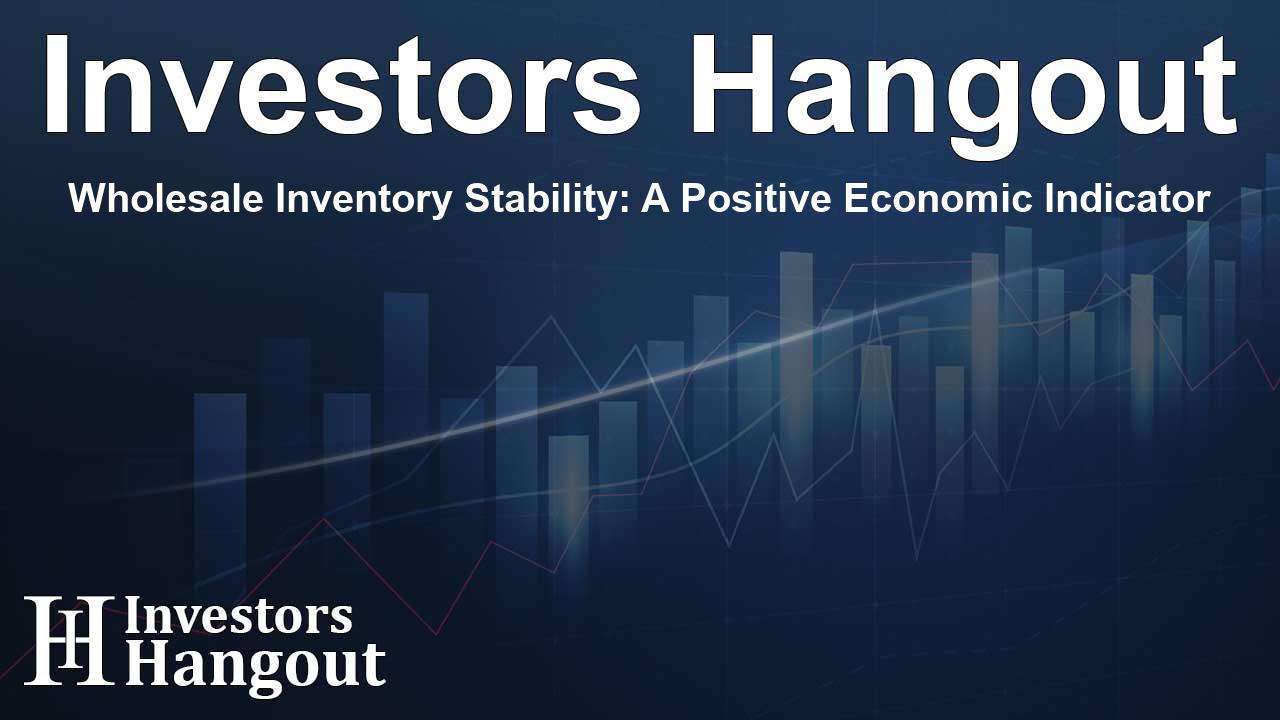Wholesale Inventory Stability: A Positive Economic Indicator

Understanding the Stability of Wholesale Inventories
Recent reports on wholesale inventories reveal a stable performance, indicating no changes from prior figures. This steadiness in wholesale inventories means that the total value of goods held by wholesalers is unchanged, which is an encouraging sign for the economy.
Actual Figures Align with Forecasts
The latest data indicated a figure of -0.2% for wholesale inventories, which perfectly matches the forecasts made by market analysts. Such consistency showcases the accuracy of market predictions and reflects a controlled environment in the wholesale sector, without the volatility that can often disrupt economic forecasts.
The Importance of Predictive Accuracy
Accurate forecasts are crucial for stakeholders involved in the economy. The identical figures of -0.2% for both previous and actual inventories highlight a marketplace that is not only steady but also predictable. Economists can rely on such data to make informed decisions moving forward.
The Effect on the USD
The current stability in wholesale inventories is viewed positively in the context of the USD. Economic principles suggest that unexpected increases in inventories can be bearish for the dollar, while lower figures often signal bullish trends. The current standing, matching expectations, suggests a neutral approach, which is beneficial for economic stability.
Implications for the Overall Economy
This steady performance in wholesale inventories could lead to increased confidence among investors and consumers alike. Such confidence is essential for spending and investment decisions, which drive economic growth.
Conclusion: Steady Markets Ahead
To sum up, the data regarding wholesale inventories reveals a market that is stable and consistent. The lack of fluctuations can be an encouraging note for those tracking the overall health of the economy and the strength of the USD. Moreover, the predictive accuracy of market analysts reinforces the current understanding of economic conditions.
Frequently Asked Questions
What does a stable wholesale inventory indicate?
A stable wholesale inventory suggests consistency in the market, which can lead to increased confidence in the broader economy.
How does this stability affect the USD?
The stability indicates no significant economic fluctuations, which is neutral for the USD and helps maintain its value.
Why is the comparison with forecasts important?
Comparing actual numbers to forecasts helps gauge the accuracy of market predictions, allowing for better economic strategies.
What was the actual figure for wholesale inventories?
The actual figure reported for wholesale inventories was -0.2%, matching the forecast exactly.
How do economists use wholesale inventory data?
Economists analyze wholesale inventory data to assess market stability and predict future economic trends, influencing policy and investment decisions.
About Investors Hangout
Investors Hangout is a leading online stock forum for financial discussion and learning, offering a wide range of free tools and resources. It draws in traders of all levels, who exchange market knowledge, investigate trading tactics, and keep an eye on industry developments in real time. Featuring financial articles, stock message boards, quotes, charts, company profiles, and live news updates. Through cooperative learning and a wealth of informational resources, it helps users from novices creating their first portfolios to experts honing their techniques. Join Investors Hangout today: https://investorshangout.com/
Disclaimer: The content of this article is solely for general informational purposes only; it does not represent legal, financial, or investment advice. Investors Hangout does not offer financial advice; the author is not a licensed financial advisor. Consult a qualified advisor before making any financial or investment decisions based on this article. The author's interpretation of publicly available data shapes the opinions presented here; as a result, they should not be taken as advice to purchase, sell, or hold any securities mentioned or any other investments. The author does not guarantee the accuracy, completeness, or timeliness of any material, providing it "as is." Information and market conditions may change; past performance is not indicative of future outcomes. If any of the material offered here is inaccurate, please contact us for corrections.